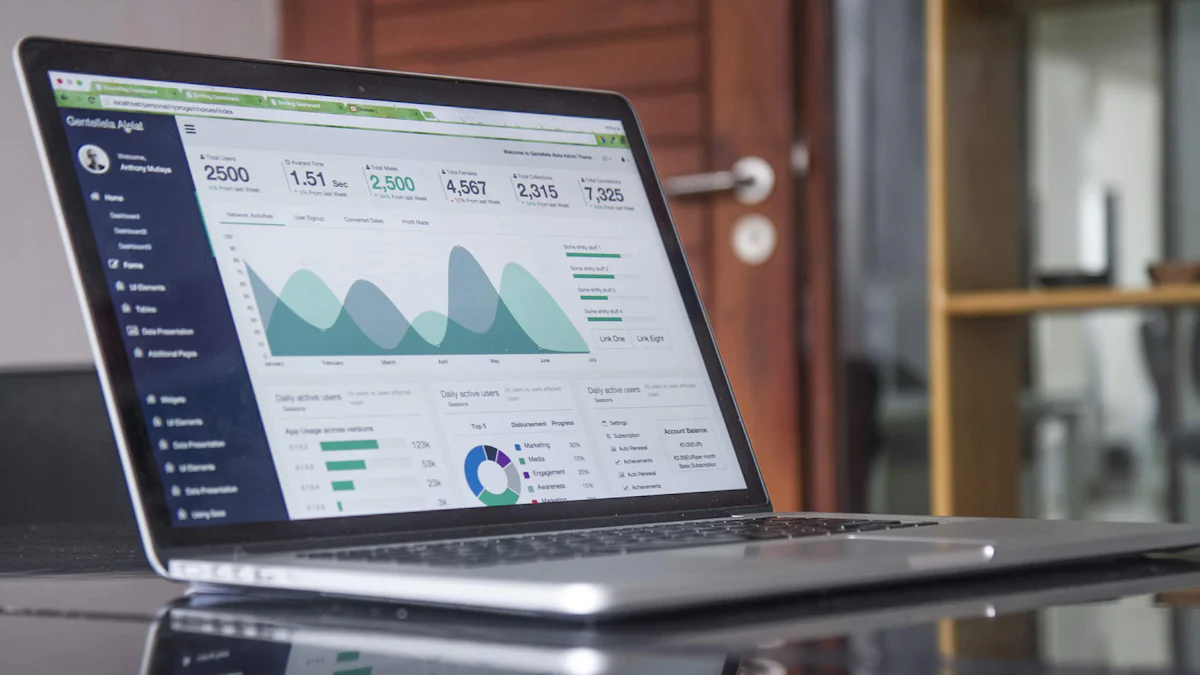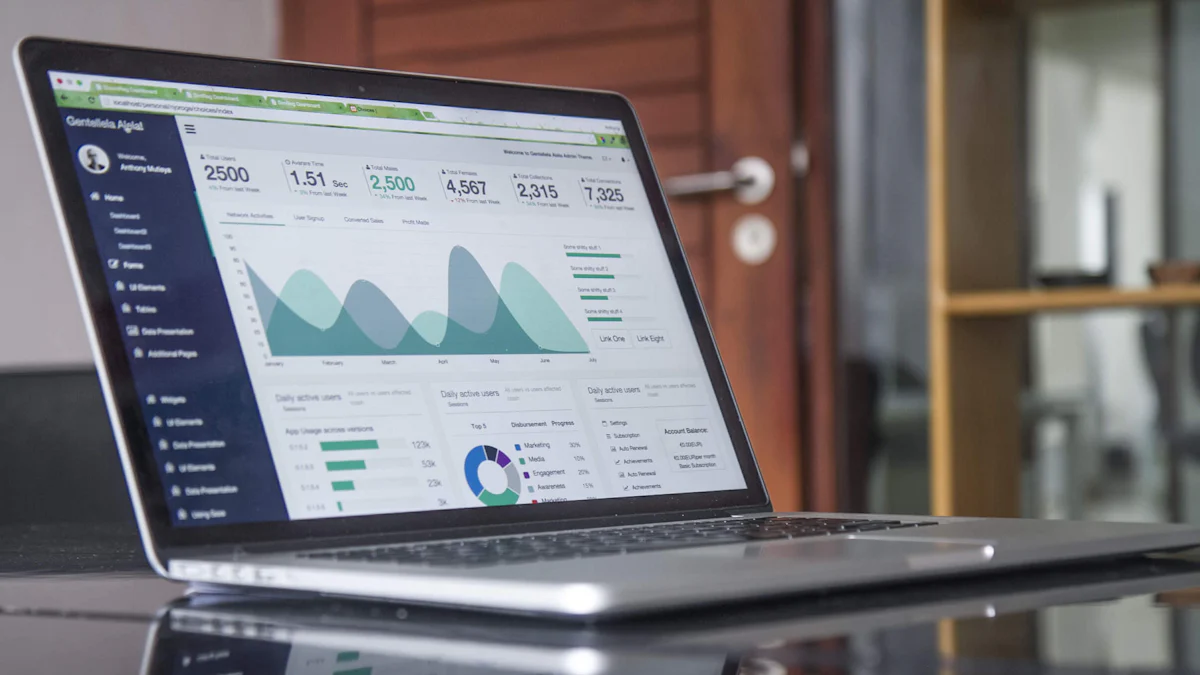


A Fact Table serves as the cornerstone of data warehousing, storing quantitative information crucial for analysis. This table holds numerical data, often denormalized, to facilitate efficient data retrieval and processing. In a dimensional model, the Fact Table acts as the primary table, containing facts, measurements, and metrics related to business processes. Understanding the structure and function of Fact Tables is essential for anyone involved in data warehousing, as it plays a pivotal role in organizing and analyzing large volumes of data.
Understanding Fact Table
Definition and Purpose of Fact Table
What is a Fact Table?
A Fact Table is a central element in data warehousing. This table stores quantitative data for analysis. The Fact Table contains measurements, metrics, or facts related to business processes. Each entry in a Fact Table represents a specific event or transaction. The table often includes additive, non-additive, and semi-additive measures. These measures are essential for various types of analysis.
Purpose of Fact Tables in Data Warehousing
Fact Tables serve a critical role in data warehousing. These tables provide a structured way to store and analyze quantitative data. Fact Tables enable efficient data retrieval and processing. Business intelligence applications rely on Fact Tables for insights. The tables support decision-making by offering a comprehensive view of business activities.
Structure of Fact Tables
Components of a Fact Table
Fact Tables consist of several key components. Measures form the core of a Fact Table. These measures include numerical data such as sales amounts or quantities. Foreign keys link the Fact Table to related dimension tables. This linkage provides context for the measures. Time stamps often accompany measures to indicate when events occurred.
How Fact Tables are Organized
Fact Tables follow a specific organization. The primary key is usually a composite key. This key consists of all foreign keys linking to dimension tables. Fact Tables often use a denormalized structure. Denormalization optimizes query performance. This structure simplifies data retrieval in analytical processes. Fact Tables work with dimension tables to provide a complete picture of business operations.
Types of Fact Table

Transaction Fact Tables
Characteristics
Transaction Fact Tables capture individual business transactions. Each row in a Transaction Fact Table represents a single transaction event. These tables store detailed data, including measures like sales amounts and quantities. Transaction Fact Tables often include foreign keys that link to dimension tables. The structure allows for precise tracking of business activities.
Use Cases
Transaction Fact Tables are essential in retail environments. Businesses use these tables to record sales transactions. Retailers track refunds and returns by recording each transaction reversal. Transaction Fact Tables also support inventory management. Companies analyze sales patterns to optimize stock levels.
Snapshot Fact Tables
Characteristics
Snapshot Fact Tables capture data at specific intervals. These tables provide a periodic view of business performance. Snapshot Fact Tables store measures that reflect the state of a process at a particular time. The structure includes foreign keys linking to dimension tables. Snapshot Fact Tables offer a time-based perspective on business operations.
Use Cases
Businesses use Snapshot Fact Tables for financial reporting. Companies capture monthly account balances for analysis. Snapshot Fact Tables also support performance monitoring. Organizations track key metrics over time to assess progress. The tables provide insights into trends and patterns.
Accumulating Snapshot Fact Tables
Characteristics
Accumulating Snapshot Fact Tables track the lifecycle of a process. These tables capture data at various stages of a process. Accumulating Snapshot Fact Tables store measures that evolve over time. The structure includes foreign keys that connect to dimension tables. These tables provide a comprehensive view of process progression.
Use Cases
Project management benefits from Accumulating Snapshot Fact Tables. Teams track project milestones and deadlines. Businesses use these tables for order fulfillment processes. Companies monitor order status from initiation to completion. Accumulating Snapshot Fact Tables offer insights into process efficiency.
Fact Table vs. Dimension Table
Key Differences
Structure Comparison
A Fact Table contains numeric facts and foreign keys that connect to dimension tables. This table stores business measurements like sales amounts or quantities. A dimension table provides context for these facts. Attributes such as date, customer, or product reside in dimension tables. The size of a Fact Table can vary significantly due to the volume of transactions it records. Dimension tables, however, maintain a more consistent size.
Functionality Comparison
Fact Tables focus on storing quantitative information for analysis. These tables capture specific events or transactions. Dimension tables, on the other hand, offer descriptive data. This data allows users to analyze the facts from different perspectives. Fact Tables enable detailed reporting and insights. Dimension tables enhance this by providing the necessary context.
How They Work Together
Integration in Data Warehousing
Fact Tables and dimension tables integrate seamlessly in data warehousing. Fact Tables store the core numerical data. Dimension tables link to these facts through foreign keys. This integration ensures that data retrieval remains efficient. Users can access comprehensive reports by joining these tables.
Complementary Roles
Fact Tables and dimension tables play complementary roles. Fact Tables provide the quantitative metrics needed for analysis. Dimension tables enrich this data with descriptive attributes. Together, they form a complete picture of business operations. This synergy supports effective decision-making and strategic planning.
Components of a Fact Table
Measures
Definition and Examples
Measures represent the quantitative data stored within a Fact Table. These values are numerical and provide insights into business activities. Examples of measures include sales revenue, profit margins, and quantities sold. Each measure corresponds to a specific event or transaction recorded in the Fact Table. Measures form the core of analysis in data warehousing.
Importance in Analysis
Measures play a crucial role in data analysis. Analysts use these values to evaluate business performance. Measures help identify trends and patterns in data. Businesses rely on measures for strategic decision-making. Accurate measures ensure reliable insights from the Fact Table.
Foreign Keys
Role in Fact Tables
Foreign keys serve as essential components in a Fact Table. These keys link the Fact Table to dimension tables. Foreign keys provide context for the measures stored in the Fact Table. The structure of a Fact Table relies on these connections for efficient data retrieval. Foreign keys enable seamless integration with dimension tables.
Linking to Dimension Tables
Foreign keys connect the Fact Table to various dimension tables. Each foreign key corresponds to a unique dimension, such as time, location, or product. This linkage enriches the data with descriptive attributes. Dimension tables offer context that enhances the analysis of measures. The relationship between Fact Tables and dimension tables is vital for comprehensive data analysis.
Importance of Fact Table
Role in Business Intelligence
Data Analysis and Reporting
Fact Tables play a crucial role in data analysis and reporting. These tables store quantitative data that analysts use to evaluate business performance. Fact Tables allow businesses to track sales, profits, and other key metrics. The data stored in Fact Tables supports detailed reporting. Businesses rely on these reports for insights into operations.
Fact Tables enable efficient data retrieval. Analysts can quickly access large volumes of data. This efficiency is vital for generating timely reports. Fact Tables help businesses identify trends and patterns. Accurate data analysis leads to better decision-making.
Decision Making
Fact Tables support decision-making processes. Businesses use the data from Fact Tables to make informed choices. The tables provide a comprehensive view of business activities. Decision-makers rely on this information to develop strategies. Fact Tables offer insights that guide strategic planning.
The data in Fact Tables reflects real-world events. Businesses can assess the impact of past decisions. This assessment helps refine future strategies. Fact Tables ensure that decisions are based on accurate data. Reliable data leads to successful outcomes.
Advantages of Using Fact Tables
Efficiency in Data Processing
Fact Tables enhance efficiency in data processing. The structure of Fact Tables allows for quick data retrieval. Businesses can process large volumes of data rapidly. This efficiency is essential for timely analysis. Fact Tables reduce the time needed for data processing.
The organization of Fact Tables optimizes query performance. Businesses can execute complex queries with ease. Fact Tables simplify data retrieval processes. Efficient data processing supports business intelligence applications. Businesses benefit from faster insights and analysis.
Scalability and Flexibility
Fact Tables offer scalability and flexibility. Businesses can expand Fact Tables as data grows. The structure of Fact Tables accommodates increasing data volumes. This scalability ensures that businesses can handle more transactions. Fact Tables adapt to changing business needs.
The flexibility of Fact Tables supports various analyses. Businesses can use Fact Tables for different types of reporting. The tables provide a versatile foundation for data analysis. Fact Tables enable businesses to explore new analytical approaches. This flexibility enhances the value of data warehousing.
Practical Applications of Fact Table

Industry Use Cases
Retail and Sales Analysis
Retailers use Fact Tables to analyze sales data. Fact Tables store detailed transaction information. Retailers track sales quantities and revenue. Fact Tables help identify sales trends. Retailers optimize inventory based on sales patterns. Fact Tables support promotional effectiveness analysis. Retailers evaluate customer purchasing behavior.
Financial Reporting
Financial institutions rely on Fact Tables for reporting. Fact Tables capture financial transactions. Institutions track account balances and cash flows. Fact Tables provide insights into financial performance. Institutions assess profitability and risk. Fact Tables support regulatory compliance. Financial analysts use Fact Tables for forecasting.
Real-World Examples
Case Study 1
Retail Chain Optimization
A large retail chain implemented Fact Tables. The chain stored sales and inventory data. Analysts identified slow-moving products. The chain optimized stock levels. Sales increased by 15% in one quarter. The chain reduced inventory costs by 10%. Fact Tables enabled data-driven decisions.
Case Study 2
Banking Performance Analysis
A major bank used Fact Tables for analysis. The bank tracked loan and deposit data. Analysts assessed branch performance. The bank identified high-performing branches. Fact Tables revealed customer preferences. The bank tailored services to customer needs. Profitability improved by 20% over a year.
Frequently Asked Questions of Fact Table
Common Queries
How to Design a Fact Table?
Designing a Fact Table requires careful planning. The process begins with identifying the business processes to analyze. Each Fact Table should represent a specific business event or transaction. Measures must be selected to capture quantitative data. These measures include sales amounts, quantities, or other relevant metrics. Foreign keys link the Fact Table to dimension tables. This linkage provides context for the measures. The structure of the Fact Table should support efficient data retrieval.
Best Practices for Maintaining Fact Tables
Maintaining Fact Tables involves several best practices. Regular updates ensure data accuracy and relevance. Data validation checks help maintain data integrity. Indexing improves query performance. Denormalization optimizes data retrieval speed. Monitoring data growth ensures scalability. Documentation of the Fact Table structure aids future maintenance efforts.
Troubleshooting
Common Issues
Fact Tables may encounter common issues. Data inconsistency occurs due to incorrect data entry. Performance bottlenecks arise from inefficient queries. Missing foreign keys lead to incomplete data analysis. Overloaded Fact Tables result from excessive data volume. Misaligned measures cause inaccurate reporting.
Solutions and Tips
Solutions address these common issues. Data validation routines correct inconsistencies. Query optimization techniques enhance performance. Regular audits ensure foreign key integrity. Archiving old data reduces table overload. Aligning measures with business objectives improves accuracy. Implementing these solutions maintains Fact Table efficiency.
Fact tables serve as the backbone of data warehousing. These tables store business measurements like sales, cost, and profit. Fact tables provide a structured way to analyze quantitative data. The central role of fact tables in data schemas highlights their importance. Businesses use fact tables for efficient data retrieval and analysis. Exploring fact tables further can enhance understanding of data warehousing.
FAQ
A Fact Table stores quantitative information for analysis. The table often holds numerical data and links to dimension tables. Fact Tables play a central role in data warehousing.
Fact Tables enable efficient data retrieval and processing. These tables support business intelligence applications by providing structured data. Fact Tables help organizations make informed decisions.
Fact Tables store the core numerical data. Dimension tables link to these facts through foreign keys. This integration ensures efficient data retrieval and comprehensive reporting.
There are three main types of Fact Tables:
Transaction Fact Tables: Capture individual business transactions.
Snapshot Fact Tables: Provide periodic views of business performance.
Accumulating Snapshot Fact Tables: Track the lifecycle of a process.
Designing a Fact Table involves identifying business processes to analyze. Measures must be selected to capture quantitative data. Foreign keys link the Fact Table to dimension tables.
Common issues include data inconsistency, performance bottlenecks, and missing foreign keys. Overloaded Fact Tables and misaligned measures also pose challenges.
Regular updates ensure data accuracy. Data validation checks maintain data integrity. Indexing improves query performance. Monitoring data growth ensures scalability.
Fact Tables enhance efficiency in data processing. These tables offer scalability and flexibility. Fact Tables support various analyses and adapt to changing business needs.
Continue Reading About Fact Table
2025 Best Data Integration Solutions and Selection Guide
Explore top data integration solutions for 2025, enhancing data management and operational efficiency with leading platforms like Fivetran and Talend.
Howard
Dec 19, 2024
2025's Best Data Validation Tools: Top 7 Picks
Explore the top 7 data validation tools of 2025, featuring key features, benefits, user experiences, and pricing to ensure accurate and reliable data.
Howard
Aug 09, 2024
Best Data Integration Platforms to Use in 2025
Explore the best data integration platforms for 2025, including cloud-based, on-premises, and hybrid solutions. Learn about key features, benefits, and top players.
Howard
Jun 20, 2024
Best Data Integration Vendors for Seamless Workflows
Discover the top 20 data integration vendors of 2025 for seamless workflows. Compare tools like Talend, AWS Glue, and Fivetran to optimize your data processes.
Howard
Jan 22, 2025
Best Data Management Tools of 2025
Explore the best data management tools of 2025, including FineDataLink, Talend, and Snowflake. Learn about their features, pros, cons, and ideal use cases.
Howard
Aug 04, 2024
Customer Data Integration: A Comprehensive Guide
Master customer data integration to enhance business operations by combining data from multiple sources for a comprehensive customer view.
Howard
Sep 07, 2024


